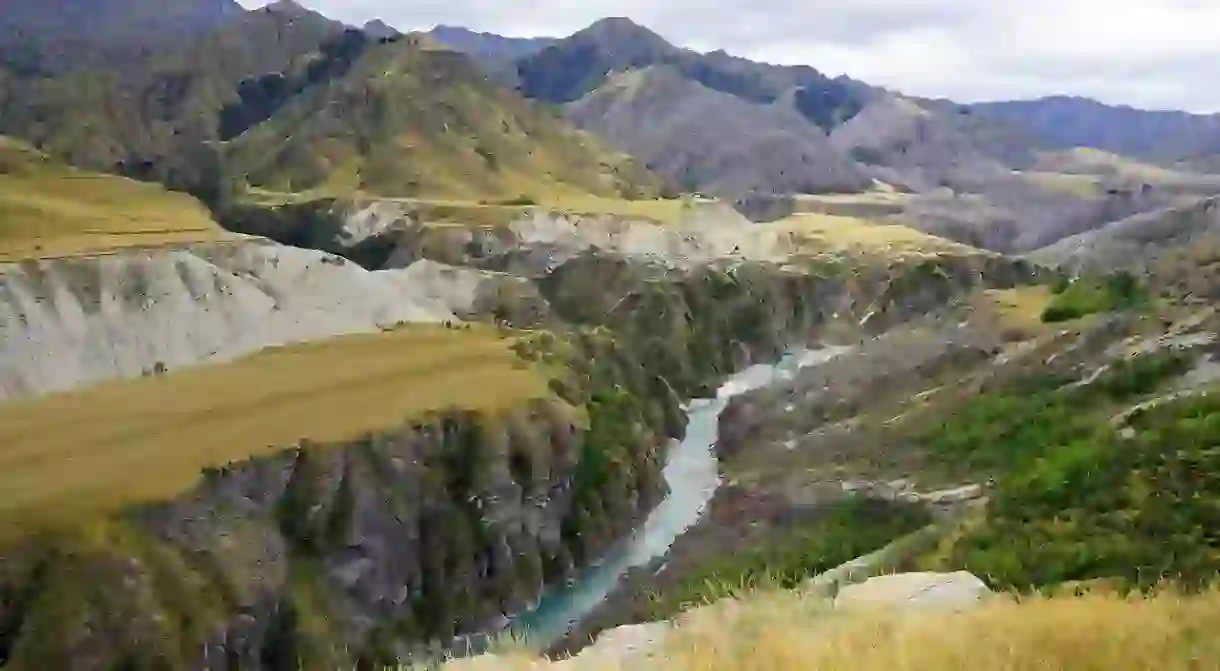A Brief History of Skippers Canyon, New Zealand

Skippers Canyon is a popular destination for adventure lovers exploring Queenstown and its surrounds. This incredibly scenic gorge, which spans approximately 22 kilometres (13.7 miles) and is usually accessed via the same road that takes people to Coronet Peak, played an essential role in New Zealand’s past. Here’s a brief look at the history that lies behind this incredible force of nature.
The Gold Rush
The canyon and nearby Skippers Point were named after ‘Skipper’ Malcolm Duncan, a Northern Irish man who earned his nickname after working on a series of American ships. Duncan was part of the mining rush that occurred in the South Island’s Otago region, discovering gold in the canyon in 1862.
This gold rush actually began not too far away from Skippers Canyon, in what is now known as Arthur’s Point. In November 1862, Thomas Arthur and Harry Redfern were able to mine approximately four ounces (28.3 grams) of gold within three hours, making no secret about their haul. Miners began to flock to the region and, soon after, the Shotover River (inside Skippers Canyon) became renowned for being the world’s richest river. The veracity of this statement, however, is hard to confirm as there are no official records of how much gold was found.

Key features of Skippers Canyon
After the first pieces of gold were collected, miners began to explore Skippers Canyon in its entirety: upstream, over the various mountains and hills, around trackless hills and inside steep-walled gorges. It didn’t take long for two Maori miners, Dan Ellison (aka Raniera Erihana) and Hakaria Maeroa, to discover 25 pounds (300 ounces) of gold at an area that became known as Maori Point. With this substantial find came the establishment of a small settlement called Charlestown, which saw a population boom of approximately 1000 people prior to 1864. After all the gold had been mined, the township numbers dwindled to 400. These days, all that remains of Charleston are a few ruins.

Aside from the Shotover River, Skippers Creek, later renamed Skippers Point, was an incredibly popular mining site until the 1900s. Mount Aurum Station’s Homestead, named after a mountain in the vicinity, was established to accommodate the passing miners. Like Charlestown, Skippers Point experienced a 1000-strong population boom, which in turn simmered to 200 at the end of the gold rush in 1864. Unlike Charlestown, however, distinctive features of the gold rush can still be found today: including the sluiced basin claimed by the Skippers Sluicing Company, the Mount Aurum Station’s Homestead, Skippers School and a cemetery.

Skippers Road and Skippers Bridge feature prominently in the area’s history, past and present. A track to Skippers Canyon was formed as miners travelled with their horses, however these were incredibly steep and highly dangerous to navigate. Demands for a proper access point continued to grow, and the area was surveyed for the construction of Skippers Road in 1883. Four contractors were tasked with completing the job over a period of seven years. Nowadays, many sections of the road still remain unaltered.

Meanwhile, the safest way to cross over to the canyon was through a suspension bridge. Work on the original Skippers Bridge, which crossed the Shotover River some six metres (19.7 feet) above the water, began as early as 1866. The structure’s susceptibility to flooding led to its replacement in 1871. As Skippers Road neared completion, plans were made to redevelop the bridge a third time – a project which began in 1898 and was only completed until after the gold rush had ended, in 1901.

The area in present times
Skippers Canyon and the Shotover River have become a must-visit among thrill-seekers. The area is primarily used for jet boating, rafting, and canyoning. Skippers Road is also a hit among those going on a road trip around the South Island, despite the fact that the route is considered one of the most dangerous in the world. The road is also considered a protected historic site by Heritage New Zealand. Skippers Bridge has become a major attraction for Skippers Canyon visitors – its remarkable height, 100 metres (328.1 feet) above the river, being its strongest appeal.














